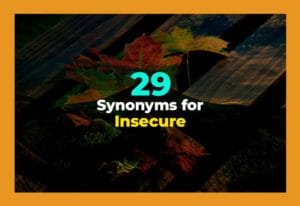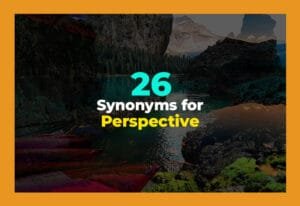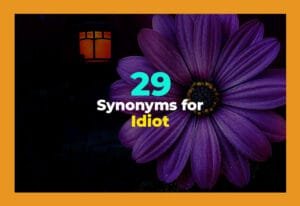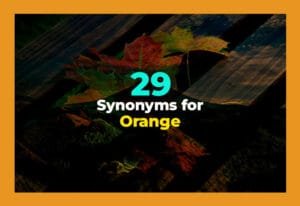You probably use “furthermore” a lot in your writing, but sometimes it feels repetitive. Words like “moreover,” “in addition,” and “besides” can make your sentences flow better and sound more natural. These synonyms are easy to use in emails, essays, or casual writing. In this article, we will explore 28 simple alternatives to “furthermore” and show you examples of how to use them.
28 Different Ways to Say FURTHERMORE: Another Word for Furthermore
Also
“Also” is a simple word that works just like “furthermore.” It's perfect for casual and formal writing when you want to add extra information without sounding complicated. You can use it in short sentences or long paragraphs, and it naturally connects ideas together. People use “also” in emails, stories, and conversations to make their point stronger. It's easy to remember and fits almost any situation. Always make sure it connects clearly to the previous sentence.
- I like pizza. I also enjoy pasta.
- She is smart and also very kind.
- The movie was funny, and it also had a great story.
Moreover
“Moreover” is slightly more formal than “also” and adds extra weight to your statement. It shows that the next point is even more important. It works well in essays, reports, or professional writing. Use it when you want to emphasize a stronger connection between ideas. “Moreover” makes your writing sound thoughtful and well-structured, helping readers follow your argument better. It is ideal for academic or persuasive writing.
- The product is affordable. Moreover, it is eco-friendly.
- He is talented. Moreover, he works very hard.
- The plan is safe. Moreover, it is efficient.
In Addition
“In addition” is another formal option that helps you connect ideas smoothly. It signals that you are adding information without repeating yourself. This phrase works in essays, articles, or business writing. “In addition” makes sentences sound polished and organized. You can use it at the start of a sentence or in the middle to strengthen your points. It is clear and professional, suitable for any serious writing task.
- In addition to his work, he volunteers at the shelter.
- The restaurant offers vegan options. In addition, it has gluten-free meals.
- She speaks French. In addition, she knows Spanish.
Additionally
“Additionally” is very similar to “in addition” but slightly more formal. It's perfect for professional writing, reports, or presentations. Use it when you want to show extra facts or ideas. This word connects sentences naturally and makes your writing sound smart without being complicated. “Additionally” is a reliable way to avoid repeating “furthermore” while keeping the flow smooth. It works in almost any context that requires logical addition.
- The software is user-friendly. Additionally, it has excellent security.
- Additionally, the team completed the project ahead of schedule.
- The plan is cheap. Additionally, it is effective.
Too
“Too” is a casual, easy-to-use word that works in friendly writing or conversations. It shows extra information without sounding formal. “Too” is short and natural, often used at the end of sentences. It is less formal than “furthermore,” making it perfect for emails, chats, or simple writing. Using “too” makes your sentences feel light and easy to read, and it clearly links one idea to another.
- I like chocolate, and I like ice cream too.
- She enjoys reading, and she likes writing too.
- The kids played outside, and the dogs ran around too.
Along with That
“Along with that” is a casual way to add information while sounding friendly. It works in storytelling, conversations, or informal writing. This phrase helps you connect ideas naturally, showing that you have more points to share. It is longer than “also” but adds personality to your writing. “Along with that” is ideal when you want your sentence to flow like speaking, making it easier for readers to understand your thoughts.
- Along with that, he brought snacks for everyone.
- She cleaned the house, and along with that, she cooked dinner.
- Along with that, they planned a surprise party.
Plus
“Plus” is short, casual, and very easy to use. It's perfect for informal writing or chatting. It works like “furthermore” but sounds lighter and friendlier. You can use it at the start or middle of a sentence to show extra information. “Plus” helps your sentences stay short and clear while connecting ideas naturally. It is a fun and simple alternative to make your writing readable.
- The bag is cheap, plus it looks stylish.
- He is smart, plus he is very funny.
- The phone is fast, plus it has a long battery life.
Over and Above That
“Over and above that” is a slightly more expressive way to say “furthermore.” It emphasizes that you are adding something extra. This phrase works in storytelling, professional writing, or casual texts. It helps the reader understand that the new point is important. Using “over and above that” makes your sentences engaging and clear. It's ideal when you want to highlight additional information.
- Over and above that, the team worked overtime to finish.
- She won the prize, over and above that, she got a scholarship.
- The project succeeded, over and above that, it received awards.
Likewise
“Likewise” is a great word to show similarity or agreement with the previous idea. It works in both casual and formal writing. It links sentences naturally and makes your writing flow. “Likewise” can show that something else is also true or happens in the same way. It is short, easy, and fits nicely in most contexts. Using “likewise” helps your sentences connect smoothly without repetition.
- I love hiking. Likewise, my brother enjoys nature.
- She studied hard. Likewise, her friends prepared for the test.
- The movie was funny. Likewise, the book made me laugh.
Together With
“Together with” is a friendly phrase that shows things or people are connected. It works in casual writing, stories, and simple explanations. This phrase adds a sense of cooperation or addition. “Together with” is useful when combining ideas or actions in one sentence. It's easy to understand and makes your sentences feel natural. Readers can follow your thoughts without confusion.
- Together with her team, she completed the project.
- The teacher, together with the students, cleaned the garden.
- He, together with his friends, planned a surprise.
On Top of That
“On top of that” is informal and emphasizes extra information. It works in casual writing, storytelling, or conversations. This phrase shows that what you are adding is important or surprising. It adds energy to your sentences. Using “on top of that” makes your writing lively and easy to read. It's perfect when you want readers to notice the extra detail.
- On top of that, he finished the work early.
- She helped everyone, and on top of that, she organized the event.
- The cake was delicious, and on top of that, it looked amazing.
Coupled With
“Coupled with” is formal and often used in professional or academic writing. It connects two ideas and shows how they work together. This phrase is perfect when you want to explain reasons, results, or combinations. “Coupled with” makes your writing sound thoughtful and clear. It is ideal when analyzing information or giving detailed explanations.
- His talent, coupled with hard work, led to success.
- The training, coupled with experience, improved her skills.
- Coupled with good planning, the team achieved its goals.
What's More
“What's more” is casual, friendly, and adds emphasis to your extra point. It works well in storytelling, blogs, or casual emails. This phrase grabs attention and makes your writing engaging. “What's more” can show that the following information is even more impressive or surprising. It's easy to use and makes sentences feel lively and natural.
- What's more, she volunteered every weekend.
- He cleaned the house. What's more, he cooked dinner too.
- The plan is cheap. What's more, it's very effective.
Apart from That
“Apart from that” is simple and shows extra points without repeating previous information. It works in casual writing, emails, and reports. This phrase separates ideas but still links them clearly. “Apart from that” helps readers understand the addition without confusion. It's easy to use and sounds natural. You can use it when adding extra information after mentioning the main point.
- Apart from that, she enjoys painting.
- He finished the work. Apart from that, he helped others.
- Apart from that, the book has many illustrations.
Similarly
“Similarly” is great for showing a connection or resemblance between ideas. It works in essays, blogs, or casual writing. This word helps the reader understand that something else is true in the same way. “Similarly” adds clarity and structure to your sentences. It's useful when comparing ideas or giving examples that match previous points.
- I enjoy reading. Similarly, my friend loves books.
- The city is beautiful. Similarly, the countryside is peaceful.
- She likes math. Similarly, her brother enjoys science.
Equally
“Equally” emphasizes that the following point has the same importance as the previous one. It works in formal and casual writing. This word makes your sentences balanced and clear. “Equally” can show fairness or comparison between ideas. It helps the reader understand that all points matter. It is simple, effective, and easy to remember.
- He is talented, and equally, he is hardworking.
- The dessert is tasty, and equally, it is healthy.
- The team contributed equally to the project.
Alongside That
“Alongside that” is casual and shows that something exists together with another point. It works in storytelling, blogs, and emails. This phrase connects ideas naturally and makes sentences easy to follow. “Alongside that” adds a friendly tone and helps readers see the connection. It's perfect for simple writing when you want to show extra points clearly.
- Alongside that, they organized a charity event.
- She painted the walls. Alongside that, she decorated the room.
- Alongside that, he helped his friends.
Over That
“Over that” is informal and emphasizes adding information. It works in casual writing and conversation. This phrase makes sentences dynamic and shows extra points clearly. “Over that” is short, easy, and natural for readers. It helps connect ideas without complicated words. Use it when you want to add something important in a friendly tone.
- Over that, he finished the homework early.
- She cleaned the kitchen. Over that, she cooked lunch.
- Over that, the plan worked perfectly.
Beyond That
“Beyond that” adds extra emphasis and works in formal or casual writing. It signals that the next point is important. “Beyond that” is great for essays, blogs, or emails. It makes sentences engaging and clear. You can use it to show additional information that enhances your message. Readers can follow your ideas smoothly.
- Beyond that, the team received recognition.
- She completed the task. Beyond that, she helped her colleagues.
- Beyond that, the project exceeded expectations.
Withal
“Withal” is an old-fashioned word but can be used to add extra points in writing. It works in formal writing, stories, or creative texts. This word adds variety and makes your writing interesting. “Withal” shows that you are adding something important without repeating yourself. It's rare but effective for giving a classic feel to your sentences.
- He is intelligent, withal very humble.
- The journey was hard, withal enjoyable.
- She is talented, withal kind.
Else
“Else” is simple and casual. It works to add extra information in conversations or emails. It helps connect ideas naturally. “Else” is short, easy, and friendly. It is perfect when you want to show something additional without formal words. Using “else” makes your writing feel natural and readable.
- Is there anyone else coming?
- What else did you buy?
- Who else is joining the party?
Besides
“Besides” is casual and very easy to use. It adds extra information and works in stories, chats, or essays. “Besides” connects ideas smoothly and naturally. It can show a reason or additional point. This word makes sentences light and readable. Use it to make your writing flow without repeating “furthermore.”
- Besides, it's a great opportunity.
- She is kind, besides being smart.
- Besides, the movie was really funny.
Over and Beyond
“Over and beyond” is expressive and shows extra importance. It works in storytelling, casual writing, or professional emails. This phrase emphasizes additional effort or point. Using it makes sentences strong and engaging. Readers can see that the added information is meaningful. It's perfect for making points stand out clearly.
- Over and beyond, he helped the team succeed.
- The service was excellent, over and beyond expectations.
- She worked hard, over and beyond her duties.
More Importantly
“More importantly” highlights the main point or shows something crucial. It works in formal and casual writing. This phrase grabs attention and connects ideas clearly. It signals that the next information matters most. Using “more importantly” makes your sentences structured and engaging. Readers focus on the key point easily.
- More importantly, we need to finish this on time.
- She is talented, more importantly, she is reliable.
- More importantly, the plan ensures safety.
To Boot
“To boot” is casual and adds extra information with a fun tone. It works in storytelling, blogs, or casual writing. This phrase makes sentences lively and friendly. “To boot” shows that something extra is included or unexpected. It's great for adding personality to your writing. Readers find it enjoyable and easy to follow.
- He is smart, and funny to boot.
- The bag is stylish, and affordable to boot.
- The house is big, and cozy to boot.
Added to That
“Added to that” is clear and casual. It shows extra information naturally. This phrase works in emails, blogs, and simple writing. It connects ideas and makes sentences easy to read. “Added to that” emphasizes the next point without formal words. Readers can follow your ideas clearly and smoothly.
- Added to that, she brought snacks for everyone.
- The project was successful. Added to that, it was completed early.
- He cleaned the room. Added to that, he organized the books.
Table of Synonyms for Furthermore
| Synonym | Example |
|---|---|
| Plus | The weather was nice, plus we had no work. |
| Alongside that | Alongside that, she baked cookies. |
| Over that | Over that, he completed his homework. |
| Beyond that | Beyond that, they helped the neighbors. |
| Withal | He is brave, withal smart. |
| Else | Who else is coming to the party? |
| Besides | Besides, the offer is very good. |
| Over and beyond | Over and beyond, they helped everyone. |
| More importantly | More importantly, the plan is safe. |
| To boot | He is talented, and kind to boot. |
| Added to that | Added to that, she invited all friends. |
| What's more | What's more, he donated money. |
| Apart from that | Apart from that, she enjoys painting. |
| Similarly | Similarly, the team prepared well. |
| Equally | Equally, she contributed to the project. |

Final Thoughts
I hope this guide helps you easily replace “furthermore” with fun, simple alternatives. Using synonyms like “also,” “moreover,” and “in addition” keeps your writing fresh and engaging. Mixing casual and formal words can make sentences flow naturally. Practicing these words in your writing will improve clarity, style, and interest. Keep experimenting with these options to find what works best for each context.









